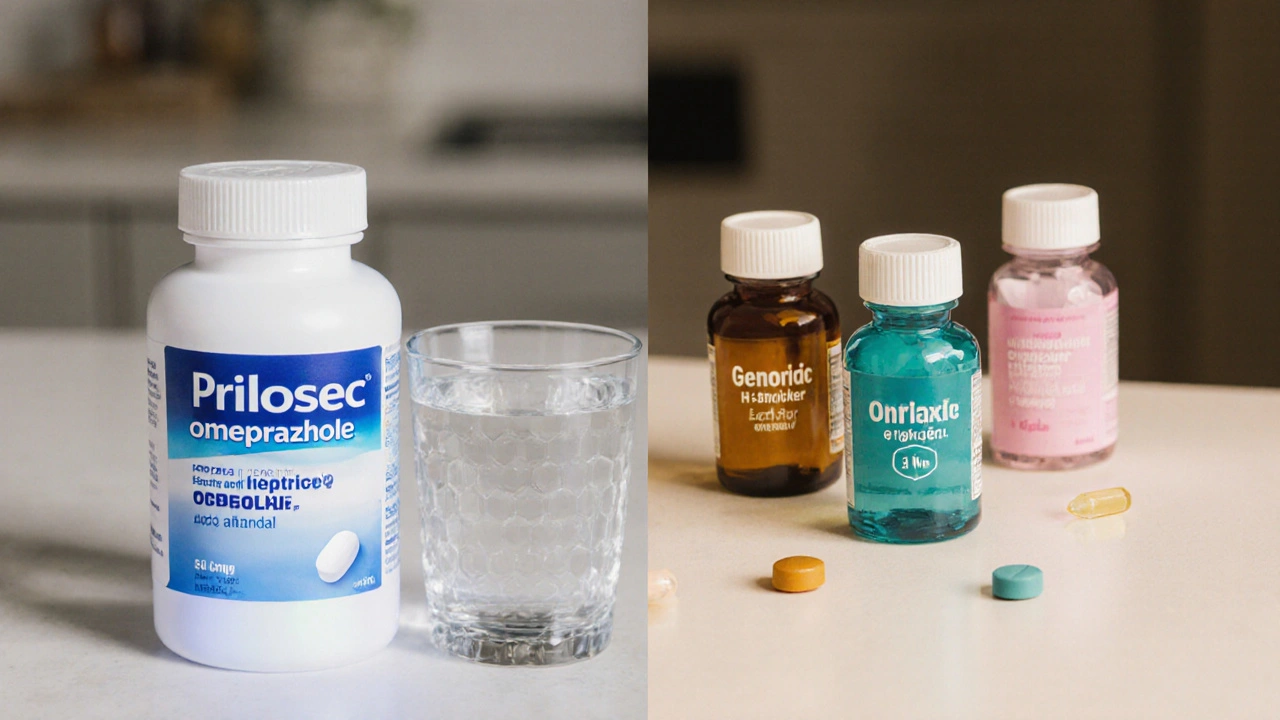Prilosec (Omeprazole) vs Other Acid Reflux Meds: Detailed Comparison
A detailed side‑by‑side comparison of Prilosec (omeprazole) and other acid‑reflux medications, covering effectiveness, cost, safety, and when to choose each option.
When dealing with GERD treatment, strategies aimed at reducing stomach acid and easing reflux symptoms. Also known as acid reflux therapy, it helps millions who suffer from heartburn, sour taste, or chronic cough. Understanding the core pieces – medication, lifestyle tweaks, and when to get help – makes managing this condition far less stressful.
The cornerstone of modern GERD treatment is the use of proton‑pump inhibitors, or PPIs. These drugs shut down acid production at its source, giving the esophagus a chance to heal. One of the most prescribed PPIs is Protonix, a pantoprazole‑based pill that typically starts relieving heartburn within a day. Another popular option is Nexium, the brand name for esomeprazole, known for its rapid onset and once‑daily dosing. Both drugs share key attributes: they lower gastric acidity, they’re taken before meals, and they have a good safety record when used short term. The choice often comes down to cost, insurance coverage, and personal response – some people feel better on Protonix, others swear by Nexium.
Beyond prescription PPIs, over‑the‑counter antacids like calcium carbonate or H2‑blockers such as famotidine can provide quick, short‑term relief. These aren’t meant to replace a PPI for long‑term control, but they’re handy after a big meal or when symptoms flare up unexpectedly. Knowing when to reach for a chewable tablet versus a daily prescription can save you trips to the pharmacy and keep your stomach from over‑reacting.
Medication is only half the story. Lifestyle changes act like a natural buffer, reducing the triggers that make acid surge. Maintaining a healthy weight, avoiding late‑night meals, and steering clear of trigger foods – spicy dishes, citrus, chocolate, and caffeine – can cut reflux episodes dramatically. Elevating the head of your bed by 6‑8 inches helps gravity keep acid where it belongs while you sleep. Simple tweaks, like chewing food slowly and not lying down right after eating, often make a bigger difference than you’d expect.
Diagnosing the severity of GERD sometimes requires tools like an upper endoscopy or a 24‑hour pH monitor. Endoscopy lets a doctor view the esophageal lining directly, checking for erosion, Barrett’s esophagus, or other complications. A pH study measures how often acid reaches the throat, confirming whether symptoms stem from reflux or another issue. These tests guide the treatment plan, telling you whether a standard PPI will suffice or if an intensified regimen or even surgery is needed.
When medication and lifestyle tweaks fail, surgical options step in. Laparoscopic fundoplication, for example, tightens the lower esophageal sphincter so it stays closed when you’re not swallowing. This procedure isn’t for everyone, but for chronic sufferers who can’t control symptoms with pills alone, it offers lasting relief. The decision to go surgical should involve a thorough discussion with a gastroenterologist and a surgeon who specializes in reflux disease.
Putting all these pieces together gives you a clear roadmap: start with an appropriate PPI like Protonix or Nexium, support it with smart eating habits, monitor your symptoms, and know when to seek further testing or specialist care. Below you’ll find a curated set of articles that dive deeper into each of these areas – medication comparisons, diet plans, buying guides for generic PPIs, and more – so you can pick the exact advice you need right now.

A detailed side‑by‑side comparison of Prilosec (omeprazole) and other acid‑reflux medications, covering effectiveness, cost, safety, and when to choose each option.